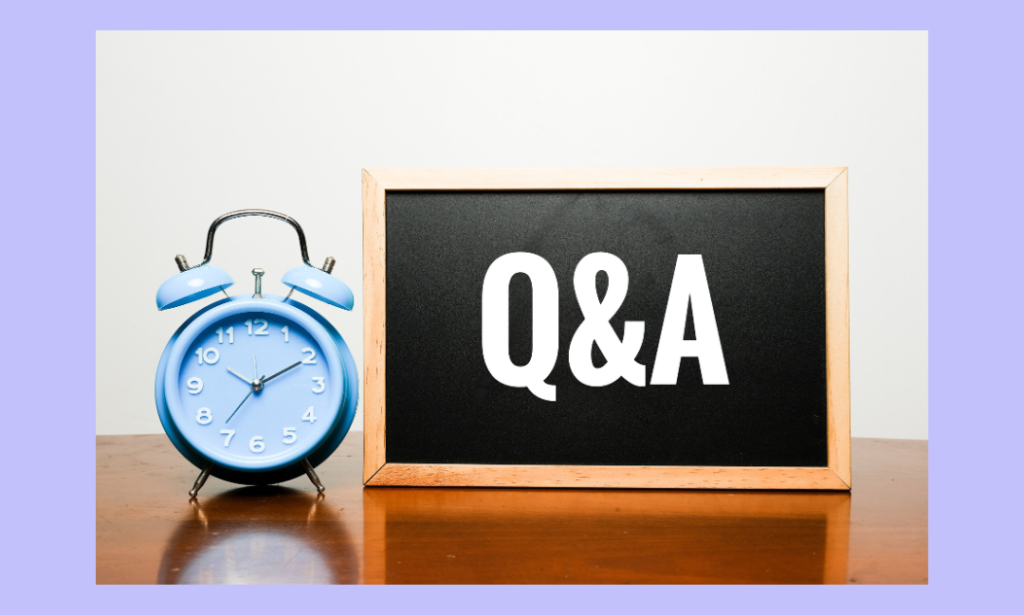
While virtual events offer unparalleled opportunities for global reach and accessibility, they also present unique challenges when it comes to engaging attendees. Factors such as screen fatigue, distractions, and technical limitations can hinder participants’ ability to fully engage with the event content and interact with fellow attendees.
Additionally, virtual events lack the physical presence and social dynamics of in-person gatherings, requiring organizers to employ innovative strategies to captivate and retain audience attention.
Throughout this discussion, we will explore the critical importance of virtual event engagement and examine effective strategies for overcoming the challenges associated with fostering meaningful interactions in a digital environment. By leveraging the power of virtual event engagement, organizations can create immersive and impactful experiences that resonate with attendees, long after the event concludes.
5 Powerful Ways to Boost Virtual Event Engagement
Organizing a virtual event brings unique challenges when it comes to keeping attendees engaged throughout the experience. Without the energy of a live, in-person setting, it can be easy for remote participants to become distracted or disengaged.
However, with the right strategies in place, you can create a highly immersive and interactive virtual event that keeps your audience hooked from start to finish.
Let’s explore five powerful ways to boost engagement at your next virtual event, ensuring a memorable and impactful experience for all attendees.
1. Pre-Event Strategies to Build Anticipation
The key to a successful virtual event lies in generating excitement and anticipation well before the event date. By implementing effective pre-event strategies, you can pique your audience’s interest, increase registration, and prime attendees for an engaging experience.
a. Targeted Marketing and Promotional Campaigns
Craft a compelling marketing campaign that highlights the unique value proposition of your virtual event. Leverage social media platforms, email marketing, and targeted paid advertising to reach your desired audience segments. Create visually appealing graphics, teasers, and sneak peeks that capture attention and spark curiosity.

b. Early Bird Registration Incentives
Offer early bird registration discounts or exclusive perks to incentivize attendees to register early. This not only boosts initial sign-ups but also creates a sense of exclusivity and anticipation among early registrants.

c. Pre-Event Engagement Activities
Organize pre-event activities, such as online challenges, contests, or social media campaigns, to actively engage your audience before the event. Encourage attendees to share their excitement, participate in discussions, and connect with fellow participants, fostering a sense of community from the outset.

2. Incorporate Interactive Elements During the Event
Passive consumption of content is a surefire way to lose attendees’ attention during a virtual event. To combat this, incorporate interactive elements that encourage active participation and foster a two-way dialogue between presenters and attendees.
a. Live Q&A Sessions
Dedicate specific time slots for live Q&A sessions, allowing attendees to ask questions and engage directly with speakers or industry experts. Encourage attendees to submit questions in advance or use real-time polling tools to prioritize and address the most pressing queries.

b. Virtual Breakout Rooms
Facilitate small group discussions or workshops by creating virtual breakout rooms. These intimate settings allow attendees to actively participate, share insights, and collaborate with like-minded individuals, fostering a sense of community and enhancing engagement.

c. Gamification and Challenges
Incorporate gamification elements, such as quizzes, polls, or challenges, throughout the event. Offer rewards, incentives, or leaderboards to encourage attendees to actively participate and stay engaged. Gamification taps into the competitive spirit and adds an element of fun to the experience.

Also Read – 8 Amazing Ways Webinars Add Value to Your Business
3. Maximizing Multimedia Content
In a virtual setting, multimedia content plays a crucial role in capturing and retaining attendees’ attention. By leveraging a variety of media formats, you can create a visually captivating and immersive experience that caters to different learning styles.
a. High-Quality Video Production
Invest in professional video production to ensure a polished and engaging viewing experience. Incorporate dynamic camera angles, high-quality visuals, and seamless transitions to keep attendees visually stimulated throughout presentations or keynote sessions.

b. Interactive Visuals and Animations
Incorporate interactive visuals, animations, or infographics to illustrate complex concepts or data in a visually appealing and digestible manner. These elements not only enhance understanding but also add an engaging layer to the virtual experience.

c. Live Polling and Word Clouds
Utilize live polling and word cloud tools to gather real-time feedback and insights from attendees. These interactive elements encourage active participation, foster a sense of community, and provide valuable data for speakers or organizers to adapt their content and address attendees’ interests.

4. Post-Event Follow-Up and Engagement
The engagement journey doesn’t end when the virtual event concludes. Effective post-event follow-up and engagement strategies can help solidify the impact of your event and foster long-lasting connections with attendees.
Also Read – Webinar Budget Management: A Comprehensive Guide For Effective Budgeting and Managing Cost
a. Attendee Surveys and Feedback
Promptly send out post-event surveys to gather valuable feedback from attendees. This feedback can provide insights into what worked well, areas for improvement, and suggestions for future events, allowing you to continuously enhance the attendee experience.

b. Networking and Community Building
Facilitate networking opportunities and community building by creating virtual spaces or forums where attendees can connect, share insights, and continue discussions. Encourage attendees to exchange contact information and cultivate professional relationships beyond the event.

c. On-Demand Content and Resources
Make event recordings, presentations, and additional resources available on-demand, allowing attendees to revisit valuable content, at their convenience. This not only extends the lifespan of your event but also provides additional value to attendees, reinforcing their engagement.

5. Analyzing and Optimizing Engagement Metrics
Data-driven insights are key to understanding and optimizing attendee engagement at virtual events. By leveraging analytics and engagement metrics, you can identify areas for improvement and make informed decisions for future events.
a. Attendance and Dwell Time Metrics
Track attendance rates, session participation, and dwell times to gauge attendee engagement levels throughout the event. Analyze these metrics to identify popular sessions, peak engagement periods, and areas where attendees may have experienced drop-offs or disengagement.

b. Social Media and Online Engagement
Monitor social media activity, hashtag usage, and online discussions related to your event. Analyze sentiment, reach, and engagement levels to understand how attendees are interacting with your event content and messaging.

c. Post-Event Conversion Rates
Track post-event conversion rates, such as follow-up inquiries, product or service purchases, or newsletter sign-ups, to measure the effectiveness of your engagement strategies in driving desired actions or outcomes.

By implementing these five powerful strategies, you can create a highly engaging and memorable virtual event experience that resonates with your audience. From building anticipation and incorporating interactive elements to maximizing multimedia content and fostering post-event connections, these tactics will help you captivate attendees, foster a sense of community, and ultimately achieve your event goals.
Remember, engagement is key to the overall success of any virtual event. By continuously analyzing and optimizing your engagement metrics, you can iterate and refine your strategies, ensuring that each subsequent event surpasses the previous one, in terms of attendee engagement and overall impact.
How Airmeet can help you Boost Virtual Event Engagement
The success of virtual events heavily relies on implementing key strategies to increase engagement. Organizers can create memorable and impactful experiences for attendees by prioritizing engagement throughout the event lifecycle.
It’s essential to emphasize the importance of continuous innovation and adaptation in the virtual event landscape. As technology evolves and attendee preferences shift, organizers must remain agile and proactive in exploring new engagement techniques and platforms. Organizations can stay relevant and deliver exceptional virtual event experiences by staying ahead of trends and embracing emerging technologies.
Any webinar platform can host your event, but selecting the appropriate one can greatly improve the outcome.
This is Airmeet’s strongest point, with its cutting-edge platform that has a number of features designed to increase engagement and conversions:
- Interactive polls and Q&A: Get immediate feedback and engage with your audience throughout the duration of the webinar.
- Seamless Integrations: To improve efficiency, seamlessly integrate Airmeet’s webinar with your existing techstack.
- Customization and Branding: Add your brand elements to the webinar interface to provide attendees with a polished and unified brand experience.
- Advanced Analytics: Get actionable insights on audience behavior and preferences to make future webinars even more successful.
With the help of Airmeet, you can produce compelling webinars that increase conversion rates.
Conclusion
Ultimately, engaging virtual experiences have the transformative potential to foster connections, inspire action, and drive meaningful outcomes. Beyond simply disseminating information, virtual events offer a platform for building communities, fostering collaboration, and sparking creativity. By harnessing the power of engagement, organizations can leverage virtual events as catalysts for positive change and growth, in a rapidly evolving digital world.
FAQ
Incorporating live polls, Q&A sessions, breakout rooms, and virtual networking opportunities can encourage active participation and engagement among attendees. By allowing participants to interact directly with the content and each other, you create a more dynamic and immersive event experience.
To combat screen fatigue, consider breaking up your event into shorter segments with frequent breaks. Incorporate engaging activities like virtual icebreakers, energizing exercises, or live entertainment to keep attendees refreshed and attentive. Additionally, offering diverse content formats, such as videos, slideshows, and interactive workshops, can help maintain interest and engagement.
Encourage audience participation by actively soliciting questions and feedback throughout presentations or panel discussions. Utilize interactive features like chat functions or virtual hand-raising to facilitate real-time engagement and dialogue. Consider incorporating audience-generated content or incorporating live polling to further involve attendees in the event proceedings.
Utilize social media platforms to generate buzz leading up to your virtual event. Share sneak peeks, behind-the-scenes content, and speaker highlights to pique interest and encourage registrations. Create event-specific hashtags and encourage attendees to share their experiences, photos, and insights on social media platforms to extend the event’s reach and foster community engagement.
Post-event, continue fostering connections with attendees by providing access to event recordings, presentations, or additional resources. Encourage attendees to share their feedback and insights through post-event surveys or discussions. Consider hosting follow-up webinars, networking sessions, or virtual meetups to further nurture relationships and provide ongoing value to attendees.




























